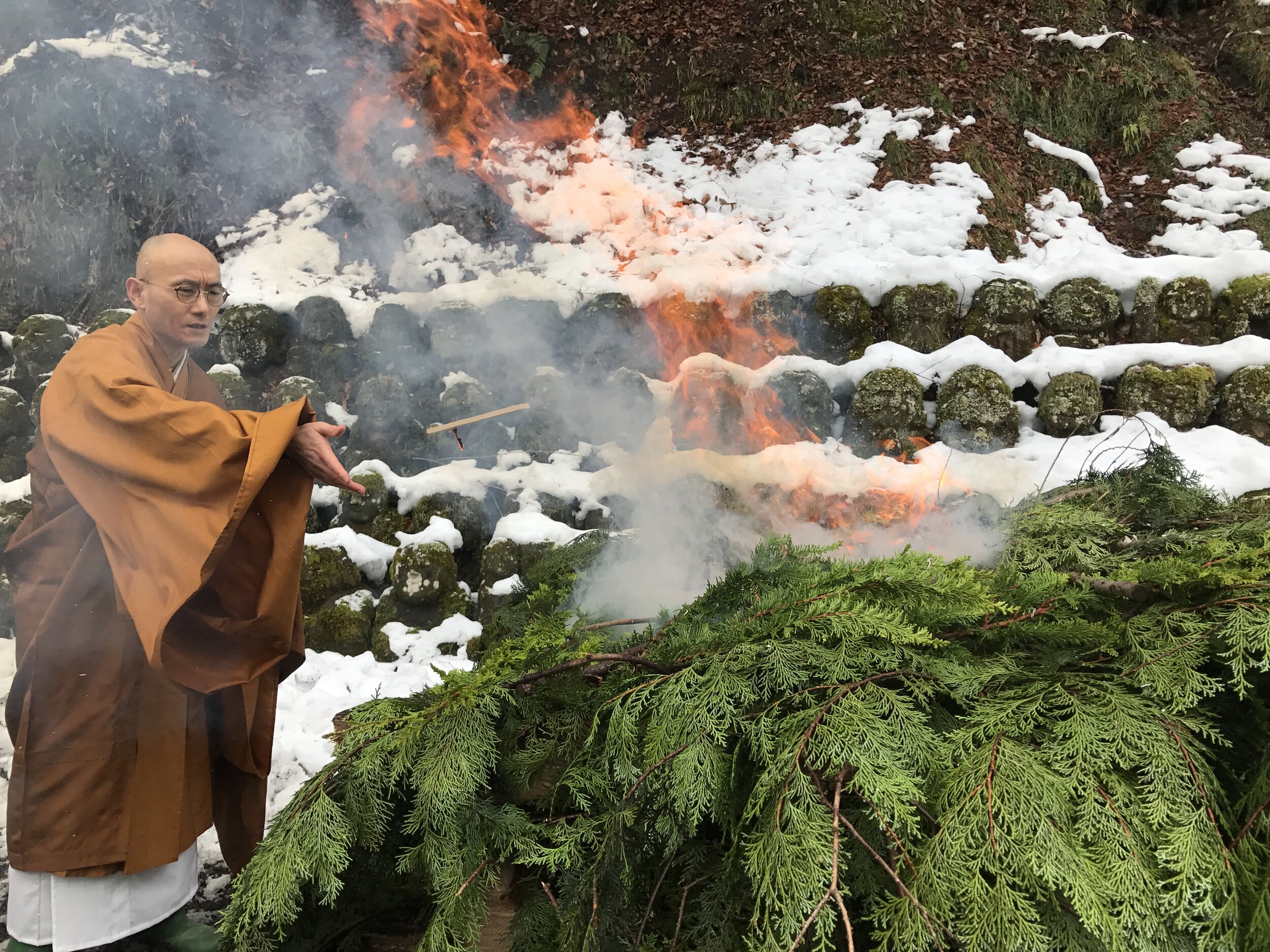Winter Purification:
The Sacred Bonfire
On the first Sunday of April at 1:00pm, a special spring festival is held at Otagi Nenbutsuji. Officially called the Hana Matsuri (Flower Festival), this event blends seasonal celebration, music appreciation, and the birthday of Buddha into a special experience that you won’t find anywhere else in Japan.
Creative Origins
This festival began as part of the revitalisation of the temple by the former head priest Kocho Nishimura when he took over in 1955. Nishimura was already a renowned restorer of Buddhist statues and an accomplished artist in his own right. Knowing that this isolated spot on the edge of Arashiyama would draw few visitors, the priest undertook a number of creative projects to boost the artistic profile of the temple. In the 1990s, the Hana Matsuri here had a distinctly Indian vibe. Nishimura family members and participants would dress up in Indian sari and perform traditional dances. A remnant from this traditional still exists in the temple’s main hall, where you can find a large wooden elephant statue donated from India. This sort of creative homage to the origins of Buddhism is rarely found at temples nowadays. Kocho Nishimura was certainly a visionary who knew how to engage and challenge his audience in new ways.
All of this was to celebrate the birthday of the historical Buddha in India, which is celebrated in Japan on April 8th and called Kanbutsue. A popular ritual for this holiday is to use a ladle to sprinkle sweet ama-cha tea made from hydrangeas over a small statue of Buddha. The figure depicts Buddha at the moment of his birth when he emerged from his mother, pointed towards the sky and the ground and shouted, "I am honored in both Heaven and Earth." Upon this proclamation, all of nature exploded into life around the Buddha and his mother, flowers blossoming and animals crying. The sweet tea shower is symbolic of this uplifting moment. At Otagi Nenbutsuji, you can try this ritual for yourself at a special altar during the Flower Festival.
Spirituality Through Music
The main act begins shortly thereafter. Koei steps from the 13th century altar of candles and incense to a modern one of synthesizer keyboards. Choruses of violins, angelic choirs, and loops of spacey magic flow from the mind of the priest as he seeks to convey the complex image of the divine in his mind. As the music unfolds, so does nature. The moment of Buddha's birth is within reach through the music that fills the ancient wooden building surrounded by forest. The priest in his orange robes closes his eyes and plays from memory, sending a passionate message conveyed through music. Bereft of repeating melody, his meandering compositions are nonetheless structured to take the you on a journey into the complexities within yourself. Intricate patterns of holy mandala charts of paradise are transmitted from the mind of a Buddhist priest. How to interpret this message is up to the listener, but the notes are a mirror into ourselves that we can gaze into if we so choose.
"Temples used to be about art," says Koei Nishimura, and he wants to bring that focus back to the forefront. By reviving this emphasis on music and art at their temple, the Nishimura family has given us a fresh key to unlock the teachings of Buddha. The spring festival at Otagi Nenbutsji is an experiment in transmitting the essence of Buddhism through art.
All are welcome to observe and participate on the first Sunday of April at 1:00pm.




